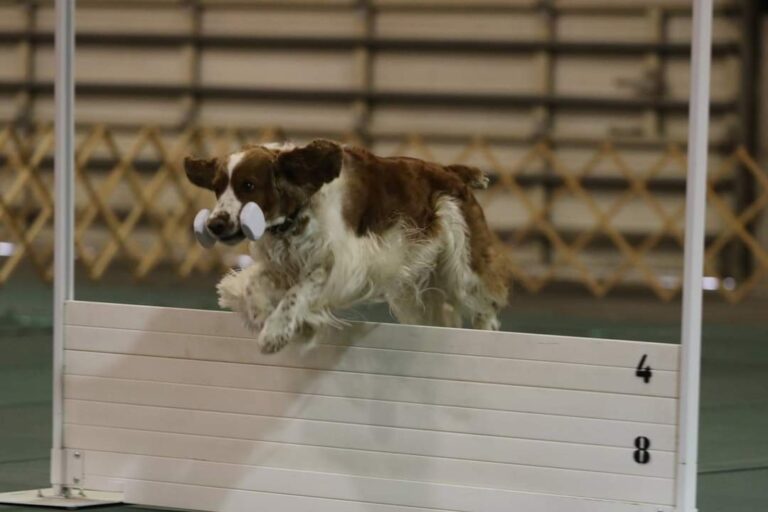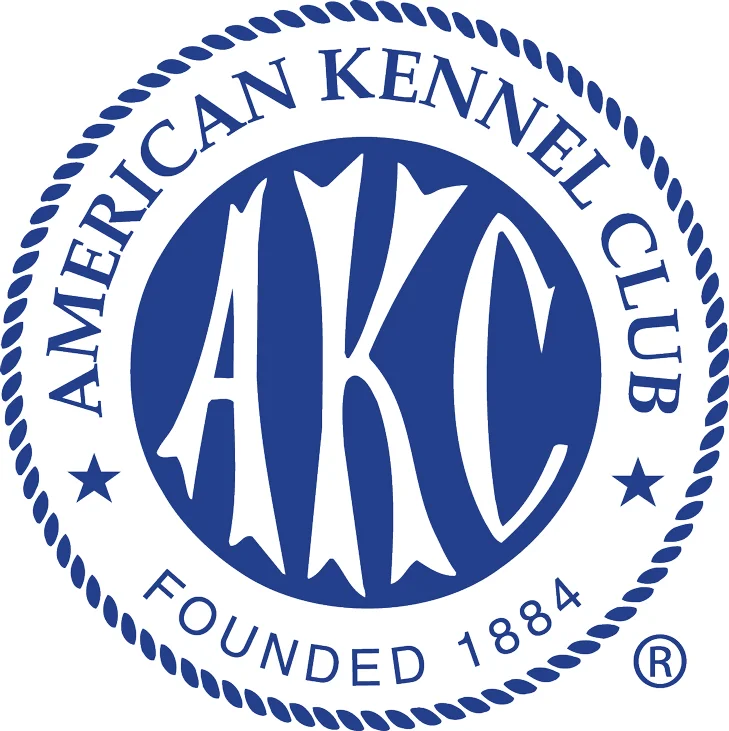Obedience

If you think you’d enjoy the competition and want to have that dog with a title on both ends, then Obedience is a great place to start. You don’t need huge equipment of agility, or the vast spaces for tracking. Just a collar, leash, and the desire to have some fun teamwork.
The AKC website has extensive resources to help you get started in Obedience with your Welshie.
Welsh Springer Spaniel Obedience Title Holders
Obedience is the oldest sport in AKC other than conformation and Welshies have been earning titles since Ace became the first Companion Dog in 1956. Over the years, new classes have been added and new competitions have been developed which have kept this sport a standard for performance dogs.
Regular Classes
Preferred or Alternative Titling Classes
Overview of AKC Obedience
The AKC separates its competition into regular, preferred, and optional titling classes. Regular classes offer titles, while non-regular classes are often for working on skills or just having fun. Most classes are also divided by “A” and “B” competition. The “A” classes are for dogs who have yet to earn that title, or, in the case of Novice A, for new handlers. With that in mind, here’s a breakdown of Obedience Classes.
Regular Classes
- Novice
The beginning level for titling in obedience, the Novice class has exercises in heeling, standing for an examination by the judge, coming when called, and two stay exercises. While the first heeling and the figure-8 are on-leash, the other exercises are off leash, including a heeling pattern. At the end of this portion of the test, the dog must perform a sit stay while the handler retrieves the leash. The two stay exercises are done in groups (usually of between 8-12 dogs), with the dogs lined up in the ring. The dogs must stay in a sit position for 1 minute and a down for 1 minute while their handlers are 6 feet away from them.
- Open
The middle level for titling, Open, is worked off leash throughout. The dogs must perform a heeling pattern and figure-8, then move through a variety of exercises. The first is a signal exercise where the dog is left on a stand stay as the handler walks 15 feet away, asks the dog to down, then walks away again to ask the dog to sit. The handler then returns to the dog. Another exercise is the drop-on-recall, where, unlike the straight recall of Novice, the dog must down on command or signal and wait until called again. Other exercises include retrieving a dumbbell on the flat, then over a high jump, and jumping the broad jump. The final exercise is a stand stay while the handler goes out of the ring to retrieve the leash.
- Utility
The highest level, Utility, requires a combination of skills. Dogs perform a heeling pattern while responding only to hand signals and have a tougher stand-for-exam than Novice. Other exercises include finding a particular leather, metal or wooden dumbbell in a group of others, retrieving the correct one of three gloves placed at different points in the ring, and jumping a bar jump and a high jump after being sent away from the handler to the other side of the ring. There are no group exercises in Utility.
Scoring
Each competition works from a perfect score of 200. Points are deducted by the judge, either minor or major, depending on the actual performance. A crooked sit might earn a 1/2 point deduction, a lag on the heel might cost a handler 3 points.
To earn a qualifying score (also called a “leg”), the team must have at least 170 points and have earned at least 50% of the points awarded in any one exercise.
If someone is discussing a score and says they got a “7” it’s probably an obedience diehard! A 7 would be a 197, only 3 points from perfect.
Each class awards 1st through 4th placements. If two dogs end up with the same score, and are in the running for a placement, they will compete head-to-head in a run-off, executing the heel off-leash exercises. This can also happen for High in Trial, which is pretty exciting to watch!
Titles
After earning 3 legs in Novice, your dog will earn the Companion Dog title, or CD. After earning 3 legs in Open, your dog will earn the Companion Dog Excellent title, or CDX. And after earning 3 legs in Utility, your dog will earn the Utility Dog title, or UD.; All these titles are listed after the dog’s registered name, and as each is earned, it replaces the former title. So, if a dog’s name included CDX, then it would have also previously earned the CD.
If you and your dog are enjoying obedience and want to make it a career (so it will seem!), there are advanced titles that make use of the same classes as above. A dog can earn a UDX by qualifying in both Open B and Utility B in 10 trials. This designation follows a dog’s name.
The ultimate in obedience titles is the Obedience Championship, or the OTCH, which goes in front of the dog’s name. The OTCH is earned by placing 1st through 4th in Open B or Utility B, with each placement earning a certain number of points based on how many dogs were in competition. In addition, the dog needs to have earned at least 3 first place scores and earn a total of 100 points.
Are you ready for competition?
If you’re new to the sport, or are starting a new dog, you might want to find a stand-alone obedience trial. While there are often obedience trials with conformation events, the noise and confusion may work against you and your nerves. A stand-alone event is likely smaller and quieter. And if you practice indoors only, you might not want to start with an outdoor show. Those Welshie noses might overcome their training, or a butterfly or hot dog vendor might wander past…
Preferred or Alternative Titling Classes
The Preferred Classes generally mimic the regular Novice, Open and Utility classes but allow the handler to choose a lower jump height. Novice is a bit different as the stay exercises are changed to a sit or down stay with the dog in the center of the ring and the handler walks around the ring in a circle, returning to the dog
Optional Titling Classes
Seen as “between” regular classes, handlers may choose to start with the Beginner Novice title which is a gateway into Novice. There is heeling, a sit for exam, a stay with the handler walking around the ring, and a recall. In this class, handlers are allowed one word of praise through each exercise except the stay. The Graduate Novice and Graduate Open classes serve as a bridge to Open and Utility and include similar elements they will find in the regular classes. There is also a Versatility class that picks 2 exercises from each of the three regular classes.
Non-Regular Classes
While not often offered at trials, these classes provide an opportunity for some fun.
- Wild Card
Wild Card classes are offered at the Novice, Open, and Utility levels and give the handler the option of taking full point value for one of the exercises (the wild card). The jump heights are lowered and dogs need not have a title to enter these classes.
- Brace
The Brace class is the same as Novice, except that two dogs are shown by one handler. The dogs may have a brace lead, which couples them together, or they may work separately. And, sometimes in Brace, they DO work separately! The best place for this is the “finish” when one dog chooses to go one direction, and the other goes the other way. Pandemonium ensues!
- Veterans
The Veterans class is for dogs who are 7 years or older and have an obedience title. The exercises used are the same as Novice, so most dogs can compete well into advanced age.
Team
The ultimate in fun! This class brings 4 dog/handler teams into the ring at the same time, working most of the Novice exercises, hopefully like a drill team in precision. The one difference from Novice is that the Recall exercise includes a drop in the center of the ring. The dogs are called and dropped in the center one-by-one, then all are called to front simultaneously. The dogs need not be the same breed, but how cute would a team of 4 Welshies be!!

